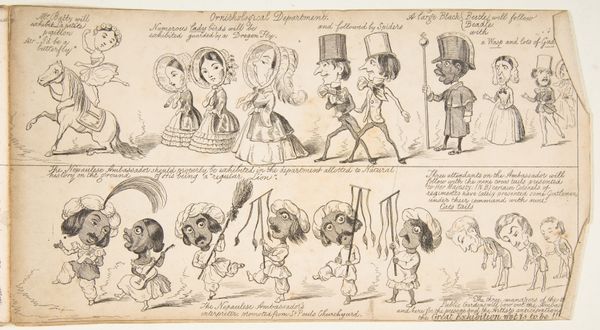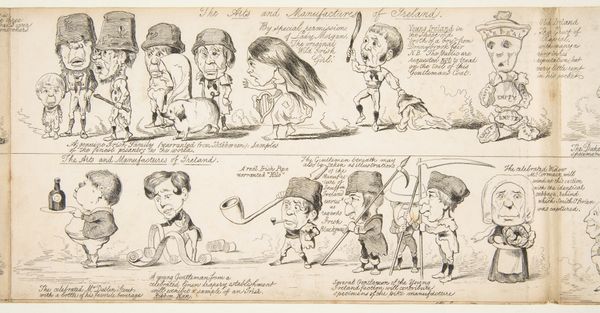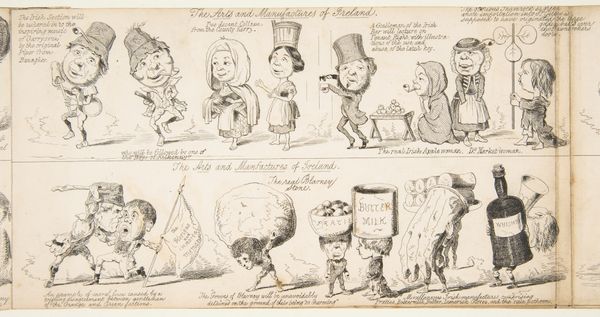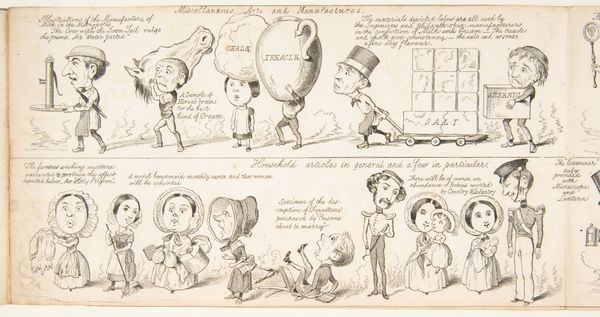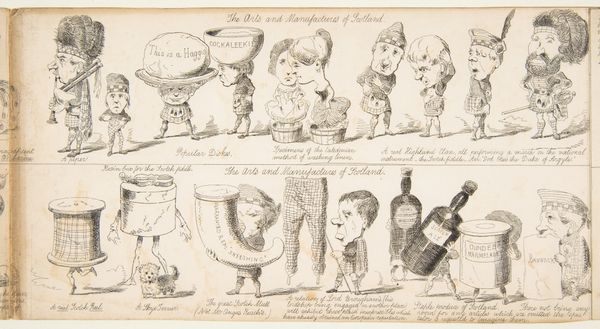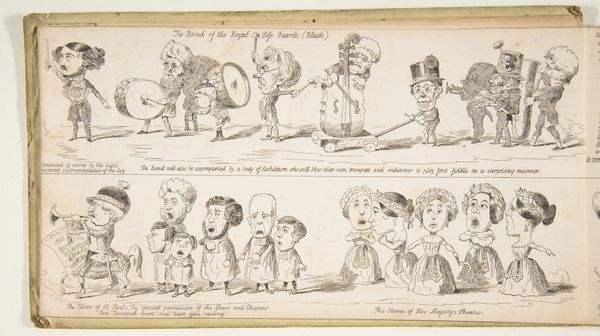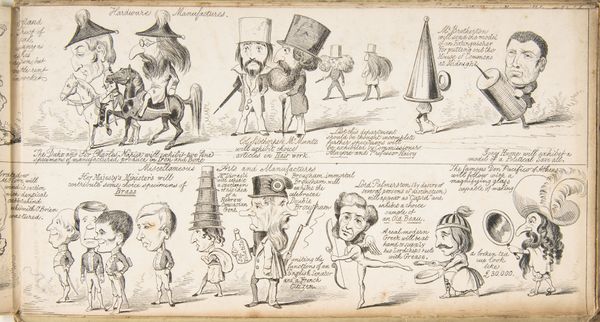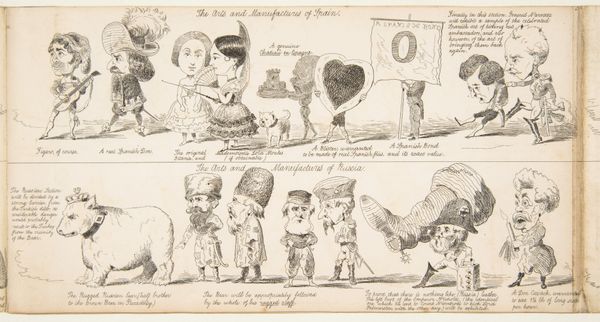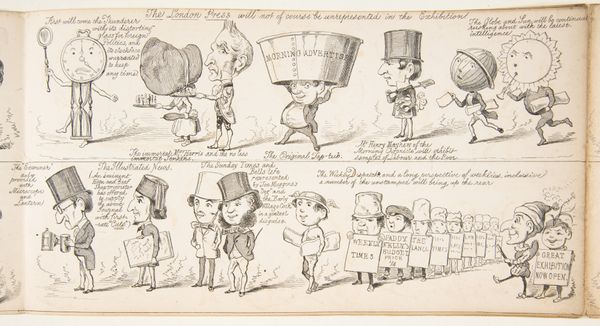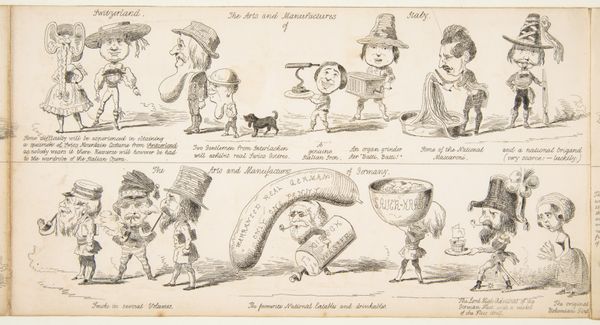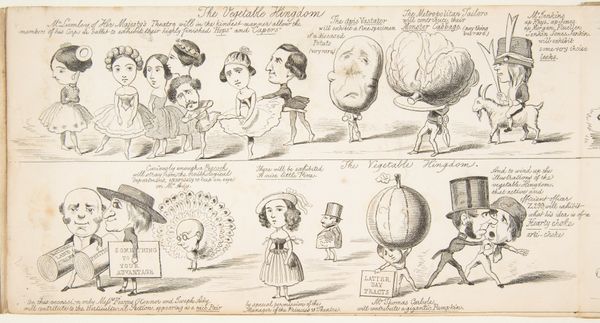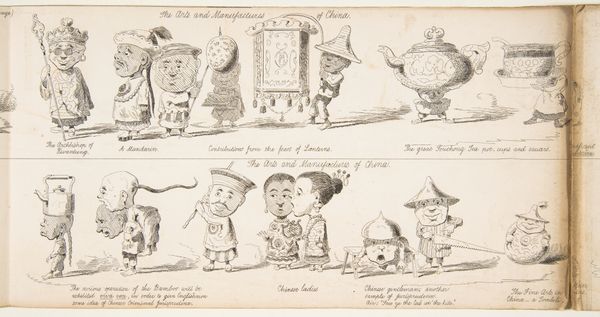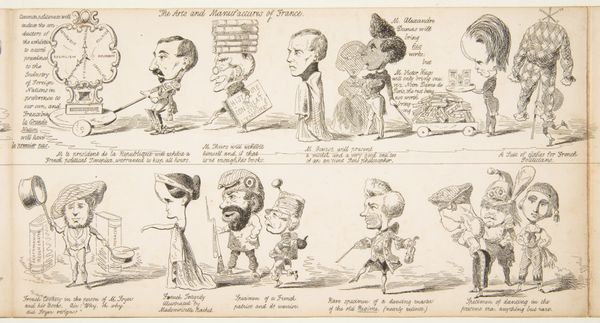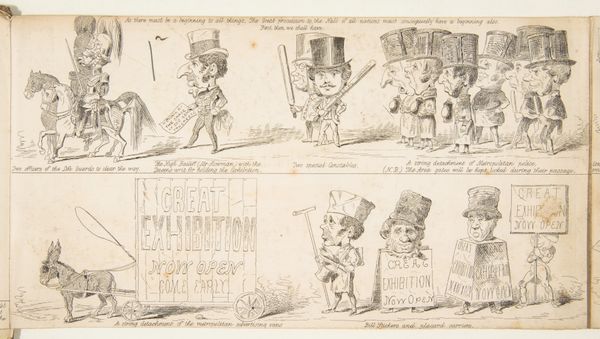
The Great Exhibition "Wot is to Be", Probable Results of The Industry of All Nations in The Year '51, Showing What is to be Exhibited, Who is To Exhibit, in Short How Its All Going to Be Done 1850
0:00
0:00
drawing, print
#
drawing
# print
#
caricature
#
romanticism
#
genre-painting
#
history-painting
Dimensions: sheet: 5 1/16 x 9 5/16 in. (12.8 x 23.7 cm)
Copyright: Public Domain
Curator: Welcome. We're looking at "The Great Exhibition "Wot is to Be", Probable Results of The Industry of All Nations in The Year '51, Showing What is to be Exhibited, Who is To Exhibit, in Short How Its All Going to Be Done," a drawing and print created by George Augustus Sala in 1850. It resides here at the Metropolitan Museum of Art. Editor: My first thought? Sardonic humor. The exaggeration of these figures is quite biting, almost unsettling. It feels like a critical social commentary, even if I don’t yet grasp all the specific references. Curator: Absolutely. Sala's caricatures rely heavily on disproportion, creating these visually striking and humorous, if somewhat grotesque, depictions. Notice the repetition of vertical lines, bisecting the drawing. What do you make of it? Editor: That’s intentional, isn’t it? The stratification lends to this feeling of separation and fragmentation, reflecting the social divisions prevalent in Victorian England. Each carefully rendered section emphasizes a societal ill, no? The artist highlights themes of elitism, greed, and societal posturing by magnifying key figures. Curator: Yes, and within each section, consider the skillful use of ink to create tonal variations and textures. There is a controlled line quality throughout that underscores his understanding of visual communication. For example, notice how the figures are isolated, given importance on this bare page with only simple captions below each image. Editor: The captions are an added layer of satire. Are these phrases pulled from news or other publications at the time, can you speak to that? To a modern audience the figures, separated by a hundred and seventy-four years, can read more as humorous character drawings if not for the careful writing that highlights societal ills in nineteenth century Britain. The artist utilizes the power of his pen as protest, almost? Curator: Precisely, Sala uses wit as a tool. Through form and sardonic characterizations, this artwork reveals the latent contradictions of progress and societal hypocrisy during a period of rapid industrialization and change. The visual strategy heightens our ability to be more self aware. Editor: This piece pushes us to consider how class, status, and power were – and are – negotiated. These issues remain remarkably pertinent, offering a potent critique that continues to resonate. Curator: Yes, his caricatures expose the very mechanisms that maintain power structures—offering critical reflection across eras. Editor: Making this seemingly simple drawing all the more compelling.
Comments
No comments
Be the first to comment and join the conversation on the ultimate creative platform.
